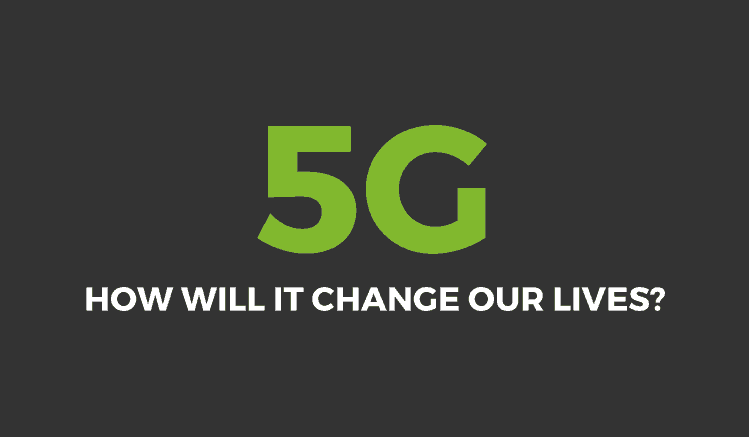5G. What is it? When will it arrive and why do we need this now?
The term 5G stands for “Fifth Generation“. As you may guess by the number 5, there have been previous generations, we find ourselves surrounded by the 4th generation at this very moment, but things are about to change.
Okay, we are pretty sure that you have realised that in the phone world things have changed quite a lot over the past 10-15 years. Not long ago, mobile phones were slow and heavy and did not have Internet access. If we look back in time, we, as humans, used to use horse-drawn carriage and we used to wear clothes that were not very good-looking but quite useful and practical, like robes. If we keep going back in time, we will find that time when we used to paint with charcoal in caverns and that roasted mammoth used to be a delight for the most refined palates. Oh wait; let’s get back to mobile phones.
In times of 1G (first generation), back in the 80s, the technology was mainly analogue and there was no international standard, but it depended on each country.
The first standardization that reached more than one country – called GSM – emerged in the European environment in the 90s, and it gave rise to the Second Generation (2G). A few years later, it was clearly insufficient due to its slowness – it was only intended for the use of voice and SMS – and it was followed by the Third Generation (3G), also called UMTS, at the end of the 20th century, which introduced the use of the internet on mobile devices (at low speed, of course).
About ten years later, around 2009, a new evolutionary leap took place in response to the demands of consumers; therefore the Fourth Generation (4G) was created, also called LTE. This is, the one we use today, which represents a substantial improvement in the speed of data transmission.
And now, you might be wondering, why do I want a higher transmission speed if I am already able to watch videos of dancing dogs on YouTube? And more important, when will 5G be around us?
Why do we actually need 5G?
Although the current technology already allows us to watch videos of dancing dogs at a great speed, the technologies that we will see in the upcoming years, will demand a new standard that will turn into a significant increase in the speed of data transmission, in the amplification of frequency bands and in the reduction of latency. What does this mean?
Bandwidth amplification is very important in relation to the reduction of interference. In the upcoming years, thanks to the Internet of Things, the number of devices connected to the network is expected to be multiplied by more than 10 (Huawei, the brand, estimates that around 100,000 million devices will be connected to the Internet Network caused by the IoT by 2025). 5G will operate in a bandwidth wider than 4G, which will enable a greater number of connections without interference, and will make it possible for cars, appliances or wearables to be connected to the network without interruptions.
Equally important or maybe more is the matter of decreasing latency. When we talk about latency we refer, roughly, to the time that a device takes to request information and receive it. Probably, this is not that important if we talk about watching videos online, but for some technologies such as autonomous vehicles, the response time will be vital. Regarding to this, 5G is expected to reduce the current latency time by approximately 10 to 50 times (up until about a millisecond), which can be the point of difference between life and death when talking about a vehicle that moves at a speed of 100 km/h.
For some people, 5G will be the basis on which the long-awaited Fourth Industrial Revolution will be based, which will transform the life of human beings in a way as never seen before.
The importance dimension of 5G can only be seen today. We can already imagine what will happen when telephones, computers, wearables, vehicles, appliances, buildings and millions of sensors of all kinds connect with each other to share information, but, until then, we will not be able to know the change that this will imply in our lives.
When will 5G arrive?
In order to answer this question, we need to bear in mind that nowadays there is still no 5G standard, so an exact date cannot be established. However, the deployment is expected to begin around 2020, which will probably coincide with the celebration of some sporting events, such as the Olympic Games that will be held in that year in the Japanese city of Tokyo.
However, the development of the 5G standard faces many difficulties. For example, it is necessary for all countries to agree on the bandwidth that will be used.
In addition to this, just like it happened when establishing previous generations of mobile telephony, the deployment of 5G technology is expected to be uneven between countries, it will probably start in the most developed countries of Asia and the United States, and then it will move to Europe and then it will be in other countries of the world.
Conclusion
We can say that even though previous generations of mobile technology were aimed at people, 5G will mainly be used by machines. Millions of devices will connect with each other to receive all kinds of information which will make our lives easier. By the way, someone will need to have control for all those devices to work properly, don’t you think?
While we await the arrival of 5G, we have to remind you that monitoring is already very useful today in order to control the proper functioning of devices and infrastructures, applications, services or business processes.
Do you know Pandora FMS? It is a flexible monitoring software that will adapt to your needs.
Learn more about Pandora FMS by clicking here: https://pandorafms.com
Or perhaps you want to find out what exactly Pandora FMS can monitor. In order to find out all about it you can ask our Pandora FMS team. How can you do that? Well that’s quite easy, you can do that by using the contact form that can be found at the following address:
https://pandorafms.com/company/contact/
Pandora FMS’s editorial team is made up of a group of writers and IT professionals with one thing in common: their passion for computer system monitoring. Pandora FMS’s editorial team is made up of a group of writers and IT professionals with one thing in common: their passion for computer system monitoring.
















